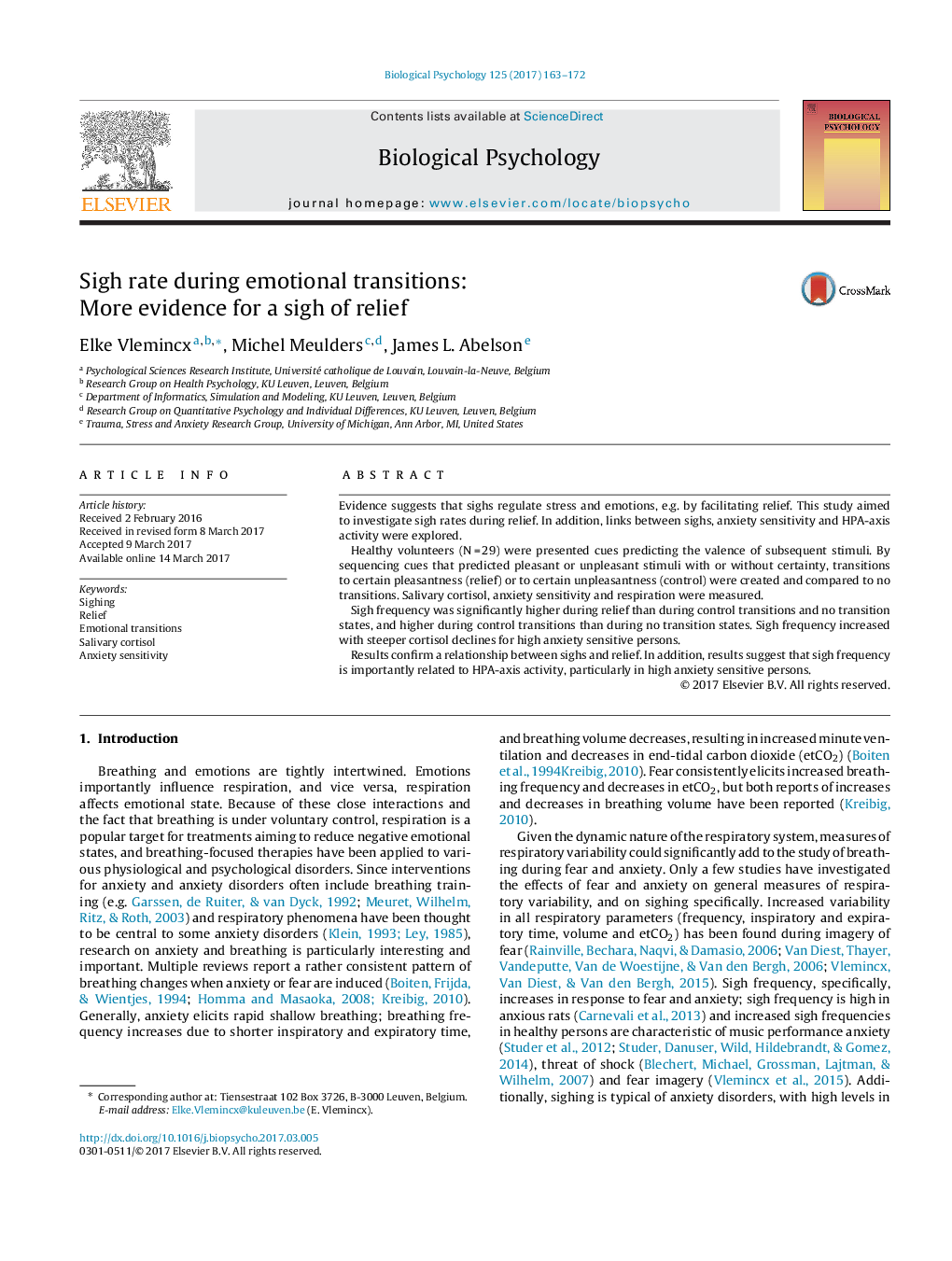| کد مقاله | کد نشریه | سال انتشار | مقاله انگلیسی | نسخه تمام متن |
|---|---|---|---|---|
| 5040413 | 1473849 | 2017 | 10 صفحه PDF | دانلود رایگان |
- Sighs are elicited by emotional transitions, and most specifically by relief transitions.
- Sighs are related to self-reported emotional relief.
- Sighs, anxiety sensitivity and stress regulation seem importantly interrelated.
Evidence suggests that sighs regulate stress and emotions, e.g. by facilitating relief. This study aimed to investigate sigh rates during relief. In addition, links between sighs, anxiety sensitivity and HPA-axis activity were explored.Healthy volunteers (NÂ =Â 29) were presented cues predicting the valence of subsequent stimuli. By sequencing cues that predicted pleasant or unpleasant stimuli with or without certainty, transitions to certain pleasantness (relief) or to certain unpleasantness (control) were created and compared to no transitions. Salivary cortisol, anxiety sensitivity and respiration were measured.Sigh frequency was significantly higher during relief than during control transitions and no transition states, and higher during control transitions than during no transition states. Sigh frequency increased with steeper cortisol declines for high anxiety sensitive persons.Results confirm a relationship between sighs and relief. In addition, results suggest that sigh frequency is importantly related to HPA-axis activity, particularly in high anxiety sensitive persons.
Journal: Biological Psychology - Volume 125, April 2017, Pages 163-172
